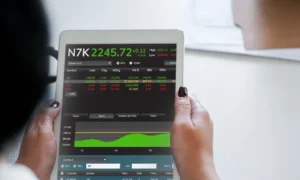Q4 2025: What to expect from 401k, the main retirement plan in the US
Discover what to expect from 401(k) plans in Q4 2025, key trends, new rules, and strategies for a stronger retirement future.
Understand what’s coming for 401(k) plans in Q4 2025

As the final quarter of 2025 approaches, many Americans with 401(k) retirement accounts are asking: what lies ahead? Given evolving market conditions, regulatory changes, and shifting participant behavior, Q4 2025 looks to be a pivotal period for 401(k) plans.
In this article, we’ll explore what participants and plan sponsors should watch for, and how to position strategies for success.
1. Continued Market Volatility and Interest Rate Sensitivity
One of the foremost challenges heading into Q4 is market volatility. Economic indicators suggest that 2025 will not be a repeat of the equity-driven rally seen in recent years.
TIAA, in its outlook, expects a resurgence of fluctuations especially in bond markets, as interest rates and inflation dynamics continue to tug markets in opposing directions.
With rates at relatively elevated levels, bond funds within 401(k) portfolios may face pressure, meaning managers and participants might lean more heavily on active fixed-income strategies to navigate dispersion. J.P.
2. Regulatory and Policy Changes (SECURE 2.0, New Proposals)
Legislation and regulation will continue shaping the 401(k) landscape in Q4 2025. The rollout phases of SECURE 2.0 are still in effect, and several key provisions will be especially relevant:
- Catch-up contributions for participants aged 60–63 must be made on a Roth basis for certain high-income earners (though there is a transitional period through December 2025);
- New automatic enrollment rules apply to many plans that originated after December 2022, requiring default contributions (starting typically around 3%) and annual escalation (e.g. increasing by 1% per year until a target);
- Eligibility for part-time workers is easing: those meeting certain hour thresholds now qualify sooner (after two consecutive years) for plan enrollment.
Beyond SECURE 2.0, some observers anticipate new retirement reform proposals from Congress, possibly affecting tax rules, required minimum distributions, or mandated lifetime income options.
TIAA’s outlook points to possible legislative moves to require or encourage in-plan payout (annuity) options, sometimes referred to as a “Q-PON” (Qualified Payout Option).
3. Greater Focus on Lifetime Income and In-Plan Payouts
One of the structural challenges of 401(k) plans is the “decumulation phase”, how to convert savings into sustainable income in retirement.
In Q4 2025, expect a stronger push toward in-plan payout solutions, including annuities, guaranteed income products, or hybrid defaults combining target-date funds and income guarantees.
According to industry outlooks, many plan sponsors are exploring these options as a means to address longevity risk and provide participants with more retirement income certainty.
4. Participation, Contribution Behavior, and Confidence
Participant behavior is an essential driver for 401(k) outcomes. Recent surveys from Schwab show that retirement confidence is declining: only 34 % of 401(k) participants say they feel “very likely” to hit their savings goals in 2025, down from prior years.
Nonetheless, most participants are holding their contribution rates steady: only 11 % report reducing their contributions in response to economic pressures. Many are cutting discretionary spending instead.
Also notable: 401(k) investments are expected to supply a larger share of retirement income — average participants estimate their 401(k) will make up about 45 % of their retirement income, up from prior estimates.
On the plan sponsor side, Q4 2025 may see strong emphasis on financial wellness programs, education efforts, and tools to help participants feel more confident and engaged in their retirement planning.
5. Fee Pressure, Innovation, and Product Shifts
The 401(k) ecosystem is also under pressure to deliver lower costs, better products, and more innovation. Over time, recordkeeping and administrative fees have trended downward due to competition.
Going into Q4 2025, plan providers are turning attention to enhancing product design: integrating alternative assets or real assets (such as real estate) into target-date funds.
Another development is interest in collective investment trusts (CITs), lower-cost vehicles often used behind the scenes in 401(k) plans. as sponsors seek more efficient structures.
Finally, technology and cybersecurity will remain high priorities, with plan sponsors expected to invest heavily in protections against fraud and digital threats.
Final Thoughts
Q4 2025 is shaping up to be a critical phase for 401(k) plans and participants alike. With evolving regulation, market headwinds, innovation in payout options, and growing participant uncertainty, this quarter may determine long-term trajectories in retirement outcomes.
Participants who stay informed, actively review their strategies, and take advantage of plan features will be better positioned to navigate the shifting environment.





